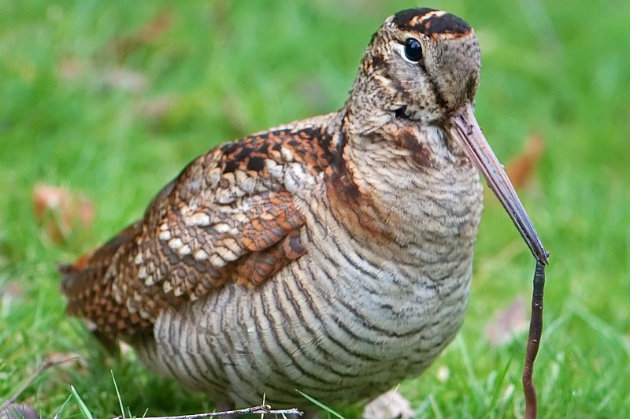How shooters can protect the woodcock
Moved to red status on the UK's Birds of Conservation Concern List in 2015, how can shooters help the woodcock?

Shooters are being asked to refrain from shooting woodcock until December
Sportsmen and women are being asked to refrain from shooting woodcock until 1st December, in new guidelines issued by the Game and Wildlife Conservation Trust (GWCT). This is due to concern that shooting may be a factor in the decline of home breeding birds.
Woodcock has red status
The UK breeding woodcock population has suffered a range contraction of 56 per cent since 1970, and breeding surveys between 2003 and 2013 showed an estimated 29 per cent decline. Owing to the scale of this, the woodcock was moved to red status on the UK’s Birds of Conservation Concern list in December 2015.
It should be said, however, that there is no indication of any decline in the numbers of migrants that visit each winter. While there are annual fluctuations, partly driven by the severity of weather, an estimated 800,000 to 1.3 million woodcock come each year. These birds are the main contributor to the annual bag taken by sportsmen, providing more than 95 per cent of what we shoot.
The Great Debate: Woodcock shooting
Woodcock: To shoot or not to shoot?
Woodcock research
The GWCT has been at the forefront of woodcock research for the past 40 years; from early radio tracking studies to modern satellite tagging. This has given us a unique insight into these fascinating and iconic birds. From the habitat requirements of home breeders, to the migration patterns of winter visitors, we have amassed a huge body of information, but we are still not clear on the causes of the decline in resident birds.
- There is no evidence that shooting is having a harmful effect, but by the same token, it cannot be ruled out.
- There are many other possible causes too, of which a changing woodland environment is likely to be one.
- The post second world war programme of planting provided masses of thicket stage woodland, perfect woodcock breeding habitat, just when the population peaked in the 1960s and 70s.
- Today, these maturing woods are less good, and ever growing deer numbers, particularly the herding species like fallow, are browsing out the herb and shrub layers that make cover for woodcock.
- Add in growing pressure from increasing numbers of ground predators like foxes and badgers, and the decline becomes less surprising.
How to help protect the woodcock
So, what can we as sportsmen do?
- Well, habitat works for a start; opening up the woodland canopy lets more light to the floor, and encourages the herb and shrub layers that are vital cover for woodcock in summer and winter alike.
- Depending on your woodland type this could be by thinning, skylighting, coppicing, or a combination of all three.
- Add in some widening and scalloping of rides, and you can make a real difference.
- Read and act on the GWCT woodcock guidelines
The second part of the story is in restraint. I love my woodcock, both for the sport they provide, and two or three delicious midwinter suppers, so I’m not suggesting no shooting. However, early season shooting, before the migrants arrive, is likely to hit home bred birds disproportionately hard. Also, GWCT research has shown that our winter birds are remarkably site faithful from year to year, so if you shoot too hard, you will be hitting your own breeding stock, and risking breaking your migratory link, even though they may breed thousands of kilometres away.









